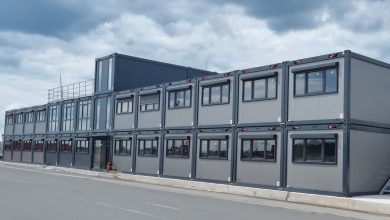A potential USD 10.5 trillion market
According to the ‘Growth Opportunities in the Global Construction Industry’ report issued by Research and Markets – the world’s leading market research store – the global construction industry is expected to reach an estimated USD 10.5 trillion by 2023, and it is forecast to grow at a CAGR (compound annual growth rate) of 4.2% from 2018 to 2023.
The future of the global construction industry looks good with opportunities in residential, non-residential, and infrastructure. The major drivers for the growth of this market are increasing housing starts and rising infrastructure due to increasing urbanization and growing population.
Emerging trends which have a direct impact on the dynamics of the construction industry include increasing demand for green construction to reduce carbon footprint, bridge lock-up device systems to enhance the life of structures, building information systems for efficient building management, and the use of fibre-reinforced polymer composites for the rehabilitation of aging structures.
Asia-Pacific is expected to remain the largest market during the forecast period mainly due to increasing urbanization, higher expenditure on infrastructural development, and affordable housing projects.
Within the global construction industry, the residential segment is expected to remain the largest segment. Financing for residential construction projects has become available with improvements in market fundamentals, like lower interest rates. The residential segment is expected to show above average growth during the forecast period.
The construction industry is very important to the EU economy as well. The sector provides 18 million direct jobs and contributes to about 9% of the EU’s GDP. It also creates new jobs, drives economic growth, and provides solutions for social, climate and energy challenges. The goal of the European Commission is to help the sector become more competitive, resource efficient and sustainable. The construction sector has been hit particularly hard by the financial and economic crisis. The main challenges facing construction are:
• Stimulating demand: Efficiency improvements in existing buildings and renovations have the highest potential to stimulate demand.
• Training: Improving specialised training and making the sector more attractive, in particular for blue-collar workers, technical colleges and universities.
• Innovation: More active uptake of new technologies.
• Energy efficiency and climate change: Buildings account for the largest share of total EU final energy consumption (40%) and produce about 35% of all greenhouse emissions.
Construction sector in Romania
The economic crisis had severe repercussions on the Romanian economy and, consequently, on the construction sector. According to the European Commission’s report (March 2017) there were 82,232 enterprises in 2014 the broad construction sector, a 16.2% decline since 2008, whereas employment dropped by 30.1% since 2008, reaching 562,107 people in 2015. Similarly, production in construction of buildings dropped by 28.3% and production in civil engineering experienced a 14.7% decrease over 2008-2015.
Profitability was also affected, with the turnover of the broad construction sector declining by 22.4% over 2008-2015 (to EUR 28.3 billion) and the gross operating surplus dropping by 30.6% (to EUR 5.3 billion).
Residential construction and the housing market suffered following the crisis, with the house price index dropping by 22.7% over 2009-2015 and the number of issued residential building permits falling by 38% in 2014 from the peak of 61,092 in 2008. Moreover, despite having the highest homeownership rate, Romania reports an above average housing cost overburden rate, highlighting housing affordability issues, as well as the highest overcrowding and severe housing deprivation rates in the EU, underscoring poor housing conditions. To address these issues whilst stimulating residential construction, the government introduced several schemes, such as the First Home Programme with a budget or RON 2.7 billion (EUR 594.8 million) for 2017, which provides state guarantees of up to 50% of the value of the mortgage. Furthermore, the National Housing Agency implements several affordable home programmes, including the Rental Housing Units for Young People and the Mortgage-financed Dwellings Programme.
The important cut in public spending on infrastructural projects over the last years has severely affected the quality of infrastructure, especially roads and highways, and was coupled with poor absorption of EU funds and questionable public procurement transparency. However, considerable investments are planned through the General Master Plan for Transport, which details strategic interventions in transport infrastructure up until 2030, for a total value of EUR 43.5 billion (with EUR 27.1 billion for road and EUR 10.2 billion for railway projects). In addition, Romania benefits from EUR 9.5 billion from the EU Regional Funds under the 2014‑2020 Large Infrastructure Operational Programme (LIOP), to be invested in transport, environment and energy projects.
Given the poor energy efficiency condition of the building stock, Romania is taking action to stimulate its renovation, focusing particularly on residential buildings. The Thermal Rehabilitation Programme, with a budget of EUR 8.8 billion for 2017, covers up to 80% of the costs incurred for thermal rehabilitation interventions of apartment blocks. However, the construction industry is facing considerable pressure, particularly in insulation and thermal rehabilitation, with 50,000 such workers being estimated to be needed by 2020 to satisfy this demand. To this end, both public and private training initiatives were introduced to upskill the workforce.
Infrastructure and residential construction are predicted to drive the revival of the Romanian construction sector in the future, with growth forecast at an annual rate of 5.4% in 2017, 2.0% in 2018, 3.8% in 2019 and 5.4% in 2020. However, improved absorption of EU funds, better project selection and management and greater procurement transparency are essential to ensure the sustained expansion of the sector.







